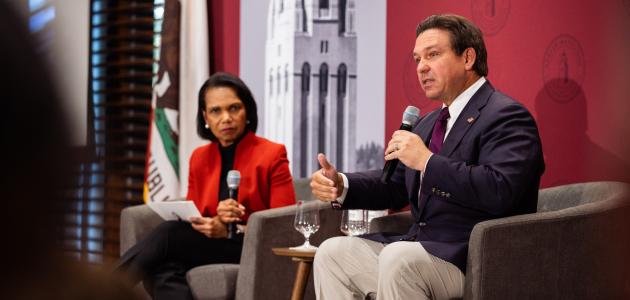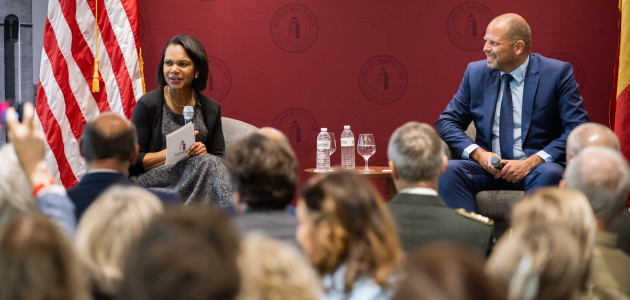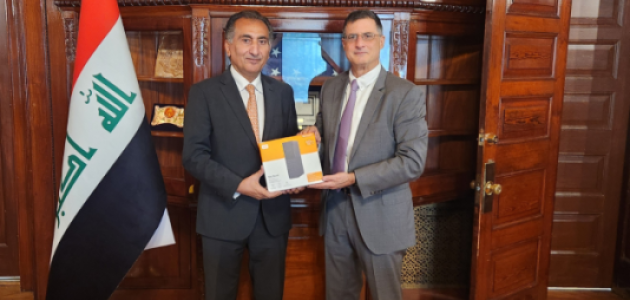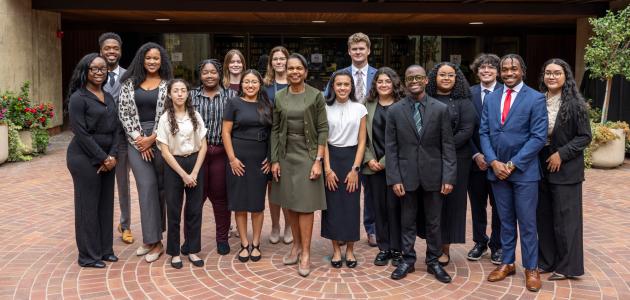
By Timothy Nunan
Timothy Nunan is a Freigeist Fellow at the Freie Universität Berlin, where he is writing a book on the encounter of the Soviet Union and socialists with Sunni and Shi’a Islamist movements during the Cold War. He is the author of Humanitarian Invasion: Global Development in Cold War Afghanistan (Cambridge: Cambridge University Press, 2016). He was a visiting fellow at the Hoover Institution Library & Archives in July 2016.
Recent scholarship in international history has shown how the Cold War between the United States and the Soviet Union affected the lives of Europeans living on a divided continent, as well as inhabitants of a decolonizing Third World where both superpowers conducted military interventions. But while the most recent generation of work on the history of the Cold War has shown us how global the confrontation between Washington and Moscow really was, it has paid less attention to how the geopolitical landscape of the day affected other axial conflicts.
My current research project explores the attempts by generations of Shi’a and Sunni Islamist activists across the Middle East, but especially in Iran and Afghanistan, to roll back socialist parties and Soviet influence, and to establish what they saw as authentic Islamic government in their home societies. As part of the research for this project, I set off for the Hoover Institution Library and Archives, which holds not only an enormous amount of material on Soviet history but also a newly-opened collection of Islamist, socialist and monarchist periodicals produced by Afghans and Arab mujahidin during the 1970s and 1980s.
The Soviet-Afghan War of 1979-1989 is often seen as a theater for the testing of the Reagan Doctrine, whereby the White House began arming anti-Soviet guerrillas in Third World conflicts around the world. Critics of the Administration’s policy often point out that the Afghan “freedom fighters” were far from champions of liberal democracy and note how the victory of the mujahidin over the Soviets and the Afghan socialist government paved the way for the rise of the Taliban.
In contrast, my research looks at the 1980s in Afghanistan in terms of a much more disaggregated conversation about the prospects for Islamic unity and anti-imperialism. The Soviet intervention in Afghanistan, I argue, helped turn formerly isolated Afghanistan into a battleground that connected multiple conflicts – not only that between the United States and the Soviet Union or Pakistan and India, but also between Islamist groups themselves about the proper terms for anti-imperialist engagement.
For starters, consider the issue of relations between Sunnis and Shi’a Islamists. Most scholarly and popular attention has gone to the Pakistan-based Sunni mujahidin who eventually formed the (failed) basis for a post-conflict coalition government. Yet if we look beyond opposition to socialism as the only analytic axis, the picture becomes more complex—and interesting. The story of how sectarian Shi’a militias have challenged state power, as well as Sunni Islamists, is perhaps familiar to readers through cases like the Lebanese Civil War or post-2003 Iraq. But it was in 1980s Afghanistan and Pakistan that the contours of a “clash of fundamentalisms” really came to the fore. (Educated guesses place Afghanistan’s Shi’a population at perhaps 15% of the total population, while Pakistan has the second-largest Shi’a population of any country after Iran.) Following the Islamic Revolution in Iran in 1979, many around the region were worried that a similar scenario could repeat itself—this time as a minoritarian dictatorship—in Pakistan of Afghanistan. Nor was this sheer fancy. The Islamic Republic of Iran also supported Shi’a Afghan militias, that, like their Sunni counterparts, also fought against the Soviets and the Democratic Republic of Afghanistan (the post-1978 Afghan state).
But the struggle of Afghan Shi’a, some (not all) backed by Iran against the Soviets was soon entangled with a sectarian struggle within the Islamic world itself. Particularly for hardline Islamist groups like Gulbuddin Hekmatyar’s Hezb-i Islami, Shi’a were considered to be as bad as Communists or not real Muslims. Shi’a groups could argue that “their” project of Islamic government had succeeded in Iran, and was not beholden to the interests of Riyadh, Washington, or Jerusalem. At the same time, they lacked a credible mechanism for exporting an Iranian-style revolution to the Hindu Kush. More than that, they were vastly outspent and outgunned by the goliath of the Saudi-Pakistani-Washington axis of anti-Communism and Sunni Islamism. And while Sunni Islamist groups enjoyed a safe haven in Zia ul-Haq’s Pakistan, Afghan Shi’a groups were not, and had to watch from their own safe zones inside of Afghanistan as Pakistani Shi’a were discriminated against a campaign of “Islamization” that was actually a cover for “Sunnification.”
Publications in Hoover’s Afghan Partisan Series capture the Shi’a view of this sectarian battle embedded in a struggle against the Soviet Union. The Afghan and Iranian authors who wrote for the Afghan Shi’a journal Habl-ul-Allah (The Rope of God), published in Tehran, sought to discredit Saudi Arabia’s claims to lead the Islamic world, noting that it obstructed the participation of Shi’a pilgrims in the Hajj and supported the interests of the State of Israel throughout the Middle East. Habl-ul-Allah championed the Ayatollah Khomeini’s authority over Shi’a communities in Afghanistan. That said, the dynamic was more complex than simple black-and-white sectarianism. Authors for the journal, for example positively evaluated the legacy of Hassan al-Banna, the Egyptian Sunni imam who founded the Egyptian Muslim Brotherhood.
Periodicals like Habl-ul-Allah present a picture of how the war in Afghanistan changed the regional landscape for Islamist actors opposed to secular and socialist regimes. As early as the 1950s, both Iranian Shi’a Islamists like Nawab Safavi and Afghan Sunni Islamists like Berhanuddin Rabbani had drawn inspiration from the Egyptian Muslim Brotherhood. Both made intellectual pilgrimages to Egypt, and later, both Rabbani as well as Iranian Shi’a cleric (and today’s Supreme Leader) Ali Khamenei translated the work of the Egyptian Islamist Sayyid Qutb. Yet throughout the 1960s and early 1970s, few opportunities presented themselves to overthrow secular or socialist regimes in favor of Islamic government. The most appealing core Arab states had formidable security apparatuses, and socialist South Yemen was too marginal and remote to become an international cause for Islamists post-1968.
By the 1980s, however, the Soviet invasion of Afghanistan connected Sunni and Shi’a Islamist groups with a concrete and vulnerable opponent in a way not previously possible against South Yemen or Soviet-supported client states like Syria or Iraq. Occuring as it did in the wake of the Islamic Revolution in Iran, however, the Islamist crusade in Afghanistan quickly bled into a struggle as much sectarian as anti-Soviet in character.
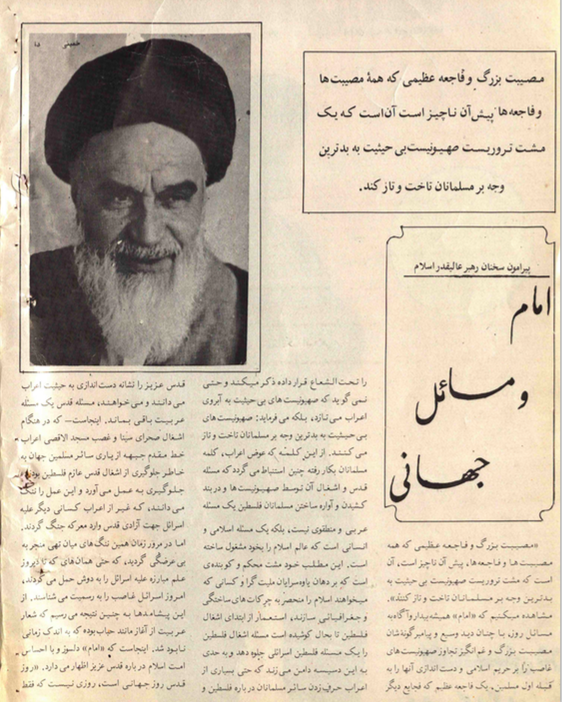
The ideological diversity of the 1980s becomes clearer still if we look at the other side of the conflict, namely the Afghan socialist regime and the Soviet Union. (The Hoover Institution’s Afghan Partisan Series also contains numerous Sunni Afghan mujahidin journals, not to mention several monarchist journals in favor of a return of the exiled Zahir Shah; I elide these here for brevity.) The common wisdom at the time said that the People’s Democratic Party of Afghanistan (later renamed the Watan, or Fatherland, Party in the late 1980s) was little more than a Soviet marionette. Not so. Even before Afghan socialists staged their own revolution in 1978 without Soviet assistance, they had their own ideas about what an Afghan road to socialism would look like. And while the first years of the Soviet occupation (1979-1989) saw the overweening influence of Soviet advisers in ministries and agencies, the process of military withdrawal meant turning over more responsibilities to Afghans themselves.
Working through the files of Teimuraz Stepanov-Mamaladze, the interpreter for Soviet Foreign Minister Eduard Shevardnadze (1985-1991) lent me a broader picture of how top Soviet policymakers understood the situation in Kabul–and the broader Middle Eastern theater in which they had lost the initiative. In spite of intense battles between the aforementioned Afghan Shi’a and Sunni mujahidin, Shevardnadze, like his American counterparts of the day, understood but dimly the sectarian tensions simmering beneath the surface of what remained a world defined by the Soviet-American Cold War. Seeking to manage the Middle East rather than ensure the success of socialism, Shevardnadze made numerous visits to Kabul in the late 1980s to discuss the withdrawal process with the Afghan regime. He and Stepanov-Mamaladze also made a highly-publicized tour of the Middle East in early 1989, capped by a visit to Tehran.
During said visit to Iran, however, the Soviets were humiliated when the Ayatollah Khomeini simply left a meeting designed to smooth over relations after Khomeini had encouraged Soviet General Secretary Mikhail Gorbachev to convert to Islam. Coming as it did after the Soviet withdrawal from Afghanistan and Khomeini’s fatwa against author Salman Rushdie, the bizarre meeting underscored how much the Soviets–and socialists more broadly–had lost control over the terms of engagement for anti-imperialists around the world.
Post-withdrawal Afghanistan would seem, in theory, to mark one exception to this. As my readings in the Dmitrii Volkogonov and Vitalii Kataev files underscored, Moscow continued to deliver significant military aid to the regime in Kabul even after it withdrew its own troops. But turning back to the pages of another periodical from the Afghan Partisan Series, namely the regime-published Akbar-i Hafta (News of the Week), revealed how the broader conversation about anti-imperialism was shifting once more. As the Afghan state (renamed the Republic of Afghanistan) pushed back against the mujahidin, it predictably celebrated Gorbachev’s perestroika reform program as a potential model for itself, but the paper disagreed with Moscow when it came to the issue of Saddam Hussein and his invasion of Kuwait in the summer of 1990. Just as Shevardnadze, with Stepanov-Mamaladze in tow, sought to broker an international response to Saddam’s aggression, both the Afghan regime and certain elements within the Sunni mujahidin forces celebrated Saddam as the one world leader willing to challenge American imperialism and Zionism in the Middle East. Some Sunni Afghan mujahidin eventually volunteered, in trivial numbers, to go fight against the Iraqi occupation of Kuwait and protect Saudi Arabia from invasion. More newspapers and journals, however, lambasted the Kingdom for turning to Westerners to defend the land of the Two Holy Mosques. (The Saudi regime had touted itself as the Custodian of the Two Holy Mosques, but far from some primordial title, it was first appopriated by the Saudis in 1982.)
It marked a strange turn. The Soviets had relinquished their claim to lead the international anti-imperialist movement—in effect bequeathing the title to Saddam Hussein. Islamists eventually succeeded in crushing the Afghan socialist government and establishing a Sunni Islamic government in Kabul, proving that the Shi’a did not have a monopoly on the practice. Even more astonishingly, the USSR vanished, releasing tens of millions of Muslims from Soviet rule. But the prospects for Islamic unity had become even more muddled than they were a decade ago, as the supposedly primordial enmity between “the West” and “the Islamic world” masked a greater sectarian and geopolitical rift within the ummah itself.
As the sketch above shows, more time is needed to digest the Persian-language periodicals I viewed at Hoover to understand the broader contours of Islamist thought during the 1980s. It also needs to be better integrated into the large collections of oral histories with Iranian and Afghan socialists that have been published in the last decade and pamphlet and archival collections I have visited, or will visit, in Europe, the former Soviet Union, Afghanistan and Iran.
Perhaps most ambitiously, there remains the issue of integrating the story of the Afghan Shi’a and Sunni jihad with that of the Sunni Arab jihadist movement which migrated to Pakistan and Afghanistan during these years. Fortunately, the Hoover Institution’s Afghan Partisan Series contains substantial runs of the Arab jihadist movements, often virulently anti-Shi’a, that joined the anti-Soviet war in Afghanistan during these years. As I begin to acquire a reading competence in Modern Standard Arabic over the coming years, I look forward to engaging these sources. In sum, the collections I obtained at the Hoover Institution Libraries and Archives have provided me with an outstanding foundation as I pursue this research agenda.
My thanks go out to the archivists at the Hoover Institution who made my stay so productive, in particular David Sun and Anatol Shmelev, who assisted me with access to the Afghan Partisan Series as well as the files of Radio Free Afghanistan—an American-sponsored radio outlet that served as an echo chamber both for the international world press as well as mujahidin publications into Soviet-occupied Afghanistan. They were gracious with their time, and helped me maximize my own time during my short visit to Palo Alto. The opportunity to enjoy the privileges of a Visiting Fellow will serve me well, and I am deeply grateful for the opportunity.













